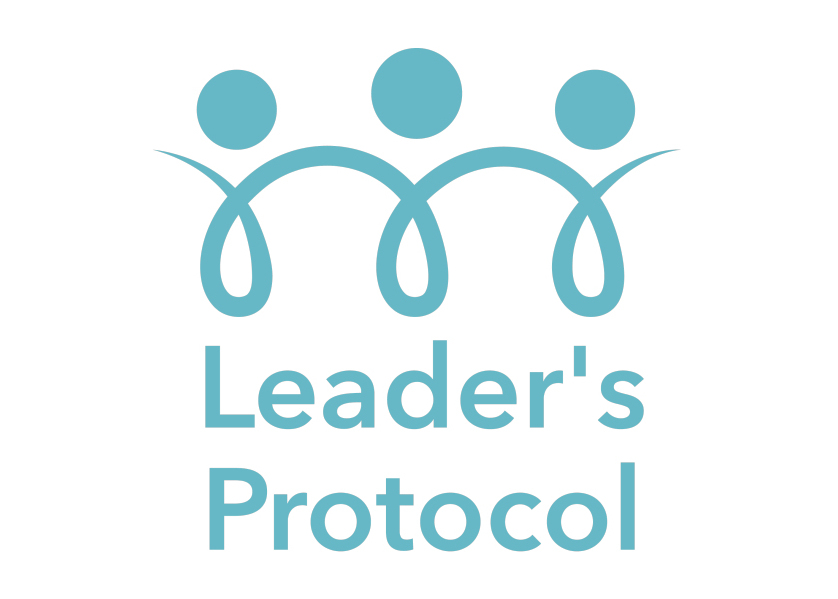An enormous subject I love to work with. No one blog can do it justice, but here's some of the things that strike me as being very relevant when getting to grips with making a plan breath life and succeed
Section 1: The Problem Statement
The strategy is the backbone of any organisation, the ambitious plan that charts a path from where we are to where we aspire to be. It’s a constellation of intentions, goals, and objectives that promise growth, transformation, and ultimately, success. However, despite the colossal time and resources poured into the creation of strategic plans, they often do not come to fruition. The stark truth is, many organisations fail to bridge the gap between strategic intent and reality, creating a perennial issue that hampers business development.
Firstly, the common pitfall organisations fall into is the lack of clear communication of their strategy. It’s easy to underestimate the importance of articulating strategy in a way that’s comprehensible to everyone within the organisation, from the boardroom to the front line. Miscommunication, or a complete lack thereof, results in a disconnection between different levels of the organisation. The strategy may be designed at the top, but its execution is often at the grassroots level. If the people responsible for its implementation don’t understand the strategy, they can’t contribute to its execution effectively.
There’s a famous TED Talk by Simon Sinek, “Start with Why,” where he suggests that people don’t buy what you do, they buy why you do it. This holds for internal teams as well. A lack of understanding of the ‘why’ behind the strategy leads to a lack of ownership, enthusiasm, and ultimately, execution.
Secondly, the relentless pace of change in the business environment presents a significant challenge to strategy execution. Many strategic plans, meticulously crafted, find themselves outpaced by rapid technological advancements, shifting market dynamics, and evolving customer preferences. Strategies are not set in stone; they must be adaptable to external changes. A failure to revise and adjust the strategy in response to these changes often results in the strategy becoming obsolete even before it’s implemented.
Harvard Professor Rosabeth Moss Kanter, in her podcast ‘Thinkers50’, cogently stated, “A strategy doesn’t get you anywhere if you can’t develop the ability to execute it.” This underscores the third common issue – a lack of necessary skills and capabilities to execute the strategy. Even the most innovative strategies are destined to falter if there isn’t a team with the right skill sets to deliver on it. It is crucial that the human resource strategy aligns with the overall business strategy.
Lastly, there is the problem of inadequate measurement and follow-up. Peter Drucker’s famous quote, “What gets measured gets managed,” encapsulates this issue. Without proper key performance indicators (KPIs) and regular follow-ups, it’s challenging to track progress and hold people accountable. This often leads to misalignment between operational activities and strategic goals, and subsequently, the non-realisation of strategic plans.
The failure to execute strategy isn’t due to a lack of strategic planning but is a manifestation of problems such as miscommunication, inability to adapt to changes, a mismatch of skills, and inadequate measurement and follow-up. The challenge, therefore, lies not in formulating the strategy, but in its execution, in turning intent into reality. Our exploration of this subject will proceed by delving deeper into each of these issues, offering insights, solutions, and recommendations to bridge the chasm between strategic intent and organisational reality.
Section 2: The Pace of Change and Strategy Execution
Navigating the high-speed highway of modern business involves constant adaptation and evolution. Today’s landscape is one where the pace of change – driven by technology, competition, market dynamics, and customer expectations – is relentless. It’s in this setting that organisations often struggle to execute their carefully crafted strategies. The key to success lies in managing change effectively, staying focused on strategic priorities amidst the whirlwind of daily operations, and providing calm and stability.
Managing Change
At the core of strategy execution is the ability to manage change. Change can be daunting, often met with resistance. It’s the leaders’ role to transform this resistance into receptiveness. This calls for excellent communication, involving employees in the process, and giving them the resources needed to adapt.
Managing change also requires agility. Agility means not being married to a strategy that’s outdated due to changes in the business environment. Leaders should be prepared to revisit and revise the strategy, ensuring it aligns with the current context. As a Harvard Business Review article pointedly stated, “In an era of constant change, the spoils go to the nimble.”
The Whirlwind and Strategic Focus
The concept of the whirlwind, presented in the book ‘The 4 Disciplines of Execution,’ refers to the urgent daily activities that consume our attention and resources, often at the expense of strategic goals. The whirlwind is unavoidable and necessary for maintaining operational functions. However, when the whirlwind becomes all-consuming, it can divert focus and resources away from executing strategy.
It’s crucial to distinguish between what’s urgent and what’s important. Not all urgent tasks are important, and not all important tasks are urgent. Strategic goals, although not usually urgent, are critical to long-term success. Leaders must ensure these goals are not lost in the whirlwind. This could involve setting aside dedicated time for strategic activities or establishing clear ‘lead measures’ (proactive measures that drive goal achievement), as suggested in ‘The 4 Disciplines of Execution.’
Providing Calm and Stability
In the face of constant change and the whirlwind of daily activities, leaders must provide a sense of calm and stability. This allows teams to focus on their work without being constantly derailed by changing priorities or uncontrolled chaos.
Leaders can provide stability by clearly communicating the strategy, setting expectations, and helping teams understand how their work contributes to strategic goals. A leader’s ability to remain composed and make thoughtful decisions amidst change and chaos can have a calming effect on the team, allowing them to focus on their tasks rather than worrying about the uncertainty.
Focusing on What Moves the Needle
When it comes to executing strategy, it’s essential to focus on what “moves the needle,” meaning activities that have a substantial impact on strategic goals. However, these activities are often challenging, requiring significant effort, resources, or changes in behaviour.
There’s a natural tendency to focus on easier tasks, those we can quickly tick off our to-do lists. But while these tasks may give a sense of accomplishment, they often don’t contribute significantly to strategic goals. Leaders must cultivate a culture of discipline and resilience, encouraging teams to take on challenging tasks that move the needle, even if they’re harder or take longer to complete.
Dealing with the pace of change while executing strategy is a balancing act. It involves managing change effectively, maintaining focus on strategic goals amidst the whirlwind of daily operations, and providing a sense of calm and stability. It’s about focusing on what truly moves the needle, embracing the challenges that come with it, and staying agile and adaptive in the face of change. This approach turns the daunting pace of change into an ally rather than an obstacle in the journey from strategic intent to reality.
Section 3: Measurement and Accountability in Strategy Execution
Measurement is a critical component of strategy execution, serving as a navigational aid that guides an organisation towards its strategic objectives. However, the process of setting up effective metrics and ensuring accountability can be a complex task. In this context, we’ll explore why we measure, what we should measure, and how to do so effectively. Additionally, we’ll comment on the roles of accountability and ownership, and the significance of rewards and recognition.
Measurements for Success: Why, What, and How
Measurement provides a structured approach to assess progress, identify areas for improvement, and ultimately, drive action towards achieving strategic goals. It offers an evidence-based perspective on whether the strategy is working or needs adjustment.
Deciding what to measure is paramount. The ‘4 Disciplines of Execution’ proposes focusing on ‘lead’ and ‘lag’ measures. While lag measures track the success of your strategic goals (they ‘lag’ behind the effort), lead measures track the actions that drive or ‘lead’ to the achievement of those lag measures. This dual focus helps align daily activities with the strategy, providing real-time insight into performance.
The ‘how’ of measurement is about the mechanisms and tools used. For some organisations, this could be balanced scorecards or strategy maps; for others, it could be digital dashboards. The crucial aspect is ensuring these tools are accessible and understood by everyone involved in executing the strategy.
Accountability and Ownership for Metrics
Accountability and ownership are the engines that drive measurement from a passive to an active process. When individuals or teams are accountable for specific metrics, they are more likely to take ownership of the actions required to influence those metrics positively. In ‘Playing to Win,’ the authors emphasise the significance of assigning accountability, stating that strategic choices without clear ownership merely represent a wish list.
Playing to Win and The 4 Disciplines of Execution
‘Playing to Win’ advocates making tough choices to create a winning strategy. This echoes the ‘4 Disciplines of Execution,’ which suggests focusing on a small number of wildly important goals (WIGs) and giving them top priority. The connection between these concepts underscores the importance of focusing on the metrics that matter most, those tied directly to the strategic objectives, and having a clear action plan to ‘win’ in those areas.
Reward and Recognition – Team and Individuals
A powerful motivator in strategy execution is the use of reward and recognition. Rewards can be tied to the achievement of key metrics, creating a direct link between individual or team performance and strategic success. Moreover, recognising individuals or teams who contribute significantly to strategy execution can create a sense of pride and ownership, fuelling motivation. While individual recognition can boost morale and motivation, team recognition can foster collaboration, breaking down silos that might hinder strategy execution. As business strategist John C. Maxwell once said, “Teamwork makes the dream work,” and this is particularly relevant in the context of strategy execution.
Effective measurement, clear accountability, a focus on what’s vital, and thoughtful reward and recognition systems form the basis of successful strategy execution. By paying attention to these aspects, organisations can bridge the gap between strategic intent and the realisation of those strategies, ensuring their journey from planning to execution is not just efficient but also effective.



